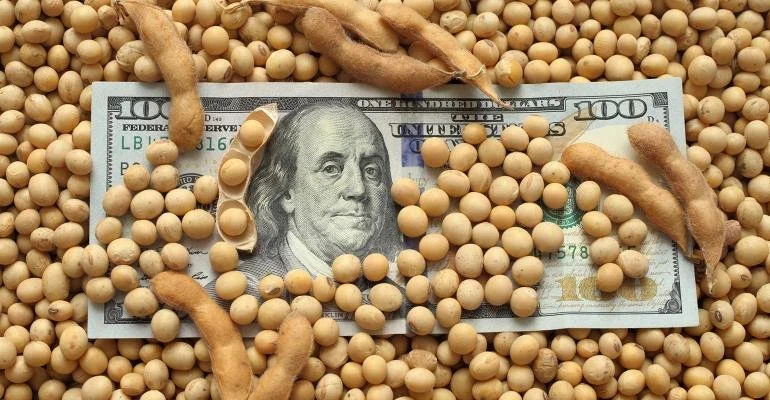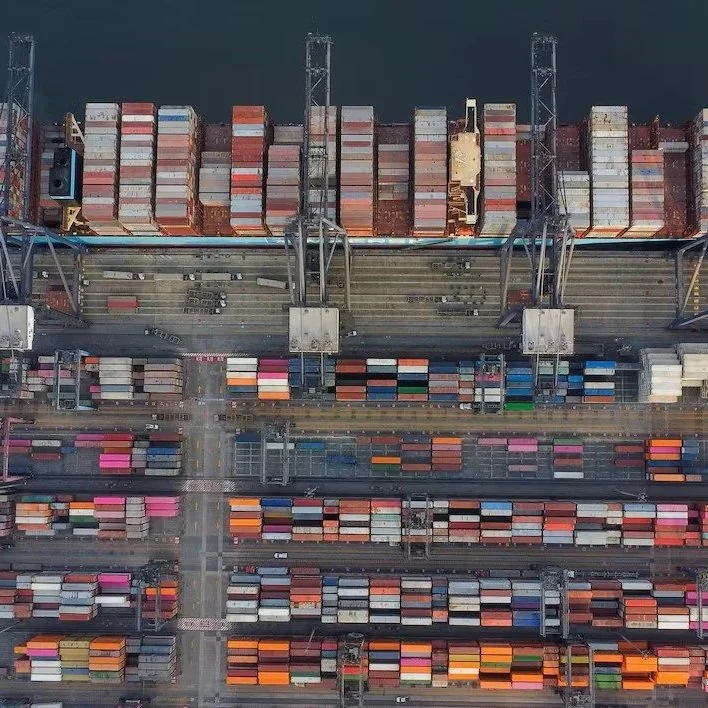Trump to Unveil $12 Billion ‘Bridge’ Aid for Farmers
U.S. President Donald Trump will unveil a $12 billion aid package for American farmers affected by his trade policies on Monday, two White House officials said.
Farm groups and Republican farm-state lawmakers have sought the aid in part to support farmers with purchases of seeds, fertilizer and other expenses for next year's growing season. U.S. farmers have been saddled this year with record harvests and lost billions of dollars in soybean sales to China when the nation turned to South American suppliers this fall during stalled trade talks.
Read More
Cutting Through the Confusion: White House Confirms Trade Agreement With China on Soybeans
Treasury Secretary Scott Bessent says China is making progress on its commitment to buy U.S. soybeans, hitting the “correct cadence,” with purchases expected to wrap by February 2026 — underscoring ongoing trade commitments and support for farmers.
Read More
Ag Groups Urge Full Extension Of USMCA To Protect Reliable Export Markets
A pair of commodity groups say the USCMA agreement is critical to providing reliable markets for American ag goods.
Read More
Experts Split on Whether China Will Meet Soybean Purchase Pledge
With just one month remaining in 2025, commodity traders, ag economists and the market appear split on whether China will meet its pledge to buy at least 12 million metric tons of U.S. soybeans by the end of the year. Bloomberg’s Hallie Gu reported that “China is expected to step up U.S. soybean purchases to meet a pledge to buy at least 12 million tons by the end of the year, according to multiple traders, underscoring a wider market hope that — at least in agriculture — a fragile trade truce can hold.”
Read More
US Soybeans Set For First Shipment To China Since May
Reuters' Karl Plume reported that "two cargo vessels were headed for grain port terminals near New Orleans on Monday to load with the first U.S. soybean shipments to China since May, according to a shipping schedule seen by Reuters. A third vessel was en route to a Texas Gulf Coast grain terminal to be loaded with China-bound U.S. sorghum in the coming days in what will be the first American shipment of the feed grain to China since mid-March, the shipping schedule showed."
Read More
China to Receive First U.S. Soy, Sorghum Shipments Since Spring
Two cargo vessels were headed toward grain port terminals earlier this week near New Orleans to load with what will be the first U.S. soybean shipments to China since May. A third vessel is moved toward a Texas Gulf Coast terminal to be loaded with U.S. sorghum bound for China, marking the first American shipment of the feed grain since mid-March.
Read More
USA Rice Participates in USDA’s Largest Agribusiness Trade Mission to Mexico
Last week, eight USA Rice members and staff—including representatives from Southern Rice & Cotton, TRC, Producers Rice Mill, GF&P Zaunbrecher Farms, and Trinidad Benham Corporation—joined the U.S. Department of Agriculture’s (USDA) largest-ever agribusiness trade mission here, which brought together more than 160 participants.
Read More
What Farmers Need to Know Before the November WASDE Report
The November USDA World Agricultural Supply and Demand Estimates (WASDE) has been rescheduled for release from Monday, Nov. 10, to Friday, Nov. 14. This will be the first update to U.S. and global supplies since Sept. 12.
Read More
US Farmers Still Need Aid Despite New US/China Framework, Expert Says
The co-director of the Ag and Food Policy Center at Texas A&M says U.S. farmers still need federal assistance despite last week’s new trade framework between the U.S. and China.
Read More
Trump Admin Still Planning Billions in Farmer Trade Aid
The Trump administration plans to roll out an initial payment of up to $12 billion for farmers hurt by the president’s tariff policies once the government shutdown ends, according to three people familiar with the matter. The finalized amount will come on top of President Donald Trump’s recently announced truce with China, which could also give some relief to U.S. producers of soybeans, sorghum and meat.
Read More
Fact Sheet On New Trade Agreement Between China & The US
Last week in the Republic of Korea, President Donald J. Trump reached a trade and economic deal with President Xi Jinping of China—a massive victory that safeguards U.S. economic strength and national security while putting American workers, farmers, and families first.
Read More
American Farmers Welcome China’s Promise to Buy Their Soybean but This Deal Doesn’t Solve Everything
American farmers welcomed China's promise to buy some of their soybeans, but they cautioned this won't solve all their problems as they continue to deal with soaring prices for fertilizer, tractors, repair parts and seeds.
Read More
China Buys US Soybean Cargoes Ahead of Trump-Xi Meet, Sources Say
China’s state-owned COFCO bought three U.S. soybean cargoes, two trade sources said, the country’s first purchases from this year’s U.S. harvest, shortly before a summit of leaders Donald Trump and Xi Jinping.
As the two nations battle over trade tariffs, the lack of Chinese buying has cost U.S. farmers billions of dollars in lost sales, after they largely supported Trump in his campaigns for president.
Read More
Farm Groups Praise Trump’s New Southeast Asia Trade Deals
Over the weekend, President Donald Trump announced trade pacts with Malaysia and Cambodia during a trip to southeast Asia. He also provided new details on potential Thailand and Vietnam deals.
Read More
China Agrees to Plan for ‘Substantial’ Ag Purchases
Treasury Secretary Scott Bessent said Sunday the U.S. and China have agreed on the “substantial framework” of a trade deal that will benefit American farmers and resolve other key issues.
Read More















